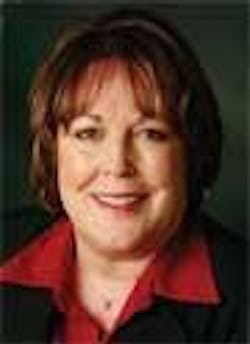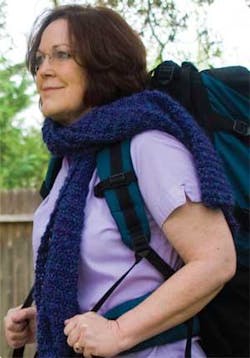Opening Doors
by Noel Kelsch, RDHAP
[email protected]
Hospice, homes, acute care centers, and the streets of my town are the doors that have been opened to me as a registered dental hygienist in alternative practice (RDHAP). There are many settings that we never dreamed of working in where we can now meet the needs of those who cannot come to us.
The “Guideline for Disinfection and Sterilization in Healthcare Facilities 2008” and “Guidelines for Infection Control in Dental Health-Care Settings 2003” offer reminders for when we are working in alternative settings.1
• Educating the caregivers and patient — Patients can and do have communicable diseases, immunocompromising conditions, and invasive devices such as a ventilator. Infection control is one of the most important aspects of their treatment.
The dental health-care provider (DHCP) has many responsibilities in this setting and is obligated to provide the patient, responsible family member, or caregiver information about infection control. This includes hand hygiene, proper cleaning and disinfecting of equipment, and safe storage of cleaned and disinfected devices. As a health-care provider, you must wear the same personal protective equipment and practice the same standard precautions you would use in the clinical setting.
• Tools of the trade — Dental instruments, equipment, and supplies must be handled and processed in the same manner as in the clinical setting. Noncritical items can be cleaned with a detergent.
In general, sterilization of semi-critical and critical items is not practical in homes but theoretically could be accomplished by chemical sterilants or boiling. Items must be transported to a central sterilization facility and processed there.
This can be accomplished by contracting out to a dental office or setting up your own sterilization center. Items should be transported in a leak-proof covered container and processed as soon as possible to reduce rusting and hardening of debris.2 Use of a presoak to minimize rusting and hardening of debris can be very helpful in this area. Single-use disposable items should be utilized as much as possible.
• Barrier protection and surface disinfection — Some environmental groups have promoted environmentally safe products as alternatives to commercial germicides in the home-care setting. These alternatives (ammonia, baking soda, vinegar, Borax, liquid detergent, etc.) are not registered with EPA and should not be used for disinfecting, since they are ineffective against S. aureus. Borax, baking soda, and detergents also are ineffective against Salmonella typhi and E.coli; however, undiluted vinegar and ammonia are effective against S. typhi and E. coli.
The public health benefits of using disinfectants in the home are unknown. Some facts, though, are known. Many sites in the home kitchen and bathroom are microbially contaminated. Hypochlorites reduces bacteria, and good standards of hygiene (such as food hygiene and hand hygiene) can help reduce infections in the home.
In areas where treatment is being delivered, it is important to not only assure disinfection of surfaces after treatment but to start with a clean environment before treatment, using hospital-grade germicides. Barrier protection can help reduce the need for chemical exposure in this environment.
The guidelines for infection control in these settings is vital to the health of both patients and DHCP alike.
References
- Guideline for Disinfection and Sterilization in Healthcare Facilities, 2008. William A. Rutala, PhD, MPH, David J. Weber, MD, MPH, and the Healthcare Infection Control Practices Advisory Committee (HICPAC)
- Centers for Disease Control and Prevention. Guidelines for Infection Control in Dental Health-Care Settings 2003. MMWR 2003;52(No. RR-17)
About the Auther
Noel Brandon Kelsch, RDH, is a freelance cartoonist, writer, and speaker. She has received many national awards including Colgate Bright Smiles Bright Futures and Sunstar/RDH Award of Distinction. Her family lives in Moorpark, Calif.


